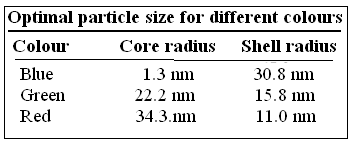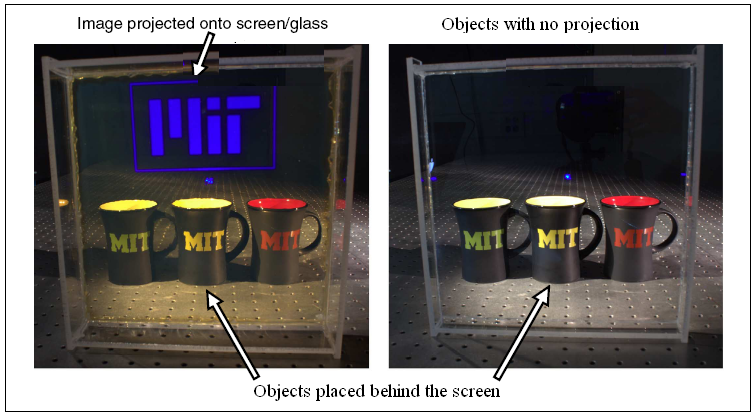Nano-particles can help put messages right on top of images that are coming through a screen, , says S.Ananthanarayanan.
Adding comments, graphs, pictures in real time, to images that are being viewed would be a good thing in many situations. This is useful for instance to project navigation information on an aircraft cockpit window or the windshield of a car, or messages or entertainment on to ordinary window glass or spectacle glass. What this kind of overlay amounts to is that the medium that displays the message is also transparent to the main images that are being viewed.
Chia Wei Hsu, Bo Zhen, Wenjun Qiu, Ofer Shapira, Brendan G. DeLacy, John D. Joannopoulos and Marin Soljacic at MIT, Harvard and the US Army Chemical Biology Centre at Aberdeen, Maryland announce in Nature Communications that they have developed a transparent display that faithfully adds messages and graphics to an existing projection, with economy, efficiency and clarity, overcoming the deficiencies in existing methods. The display now developed relies on nano-particles deposited within the transparent medium, which efficiently reflect light that is shone upon the medium, in a wide cone, and yet do not interfere with the images that are passing through the medium.
The authors of the paper describe the existing devices. The simplest is the ‘head-up’ display, where a pilot or driver can see the message right on the windscreen before her, that is, with her head still ‘up’, without having to look down. This display usually depends on a half silvered sheet at an angle, to reflect the message into the field and yet not block the view. The trouble with this design is that it could work only when the message needs to be seen from a narrow angle. The angle of view can be widened if there is scattering instead of reflection, but in this case, making sure that the message is clear would reduce transparency and hence clarity of the original image. More complex arrangements have components that convert the message from Ultra Violet or Infra Red to visible, but these are difficult to implement in an efficient way. There is even the idea of not shining the message on to the screen, but generating the message in the screen, using transparent electronics. There is some success in this direction, but still not practical for a larger size of display.
Nano particles
The system now developed relies on a special property of particles whose dimensions are of the order the wavelength of light, to selectively reflect, but reflect strongly, light of a particular wavelength. The property of reflection is related to the presence of free electrons at the surface of metals. Electrons, which are charged particles, interact with light waves, which consist of rapidly changing magnetic as well as electric fields. The surface electrons thus take up the energy of the wave, which they re-emit as the reflected wave. And as it is the electrons that carry out this action, metal surfaces are typically good reflectors.
But when the dimensions of the surface are very small, the to and fro motion of the electrons at the surface, which follows the rules of quantum mechanics, can match the frequency of waves of a particular colour of light. In such a case, it is said that there has been resonance and there is strong reflection. But with small particles, where there is no resonance, as in the case of light of other frequencies or colours, and the wave just passes through. Very small particles can thus act as a selective, but powerful reflector of just one particular colour of light, whose frequency matches that of the electrons on the surface. A screen embedded with such particles would then reflect light that is shone on it at a particular frequency, but allow all other light, of the main images, to pass through without being affected.
Chia Wei Hsu and others note in the paper that the metal, silver, is the most suitable, out of others, like gold, copper, aluminum, lithium, tantalum and so they used silver based nano-particles. The design requires silica cores with a shell of silver, and the table shows the optimum radii of the core and shell for different colours of light. As the core suitable for blue light, which was chosen as test frequency, is small, silver nano-particles were used. The particles were suspended in a vinyl – alcohol compound and poured on a glass sheet. When the plastic set, the sheet was covered with a transparent layer embedded with silver nano-particles.

Proof of principle
The trials with blue light showed that an image of ‘MIT’ was effectively projected on a screen through which a trio of MIT mugs was viewed, as shown in the picture. The screen had effectively lost no transparency and the overlaid image was distinct. The trio of mugs could be replaced by any other display, or activity in progress, and the ‘MIT’ image could be expert comments or announcements or even a video of a different part of the activity, related to the main display. If nano particles corresponding to green and red light are added to the particles embedded on the screen, the display would be in the three primary colours and hence could be in full colour.

The principle demonstrated is that the simple display could have clarity, be visible from a wide viewing angle and also readily scalable to large size of screen and display. The polymer used is inexpensive and the quantity of silver is negligible. The design of the nano-particles could be improved for more accurate colour response, so that true full colour rendition is possible.
Additional possibilities are of flexible screens and screens that can be rolled up and carried. Another attractive possibility is because the polymer film is only 0.46 mm thick. Most of the light hence undergoes only single scattering, as opposed to multiple scattering. The result is that a property called the polarization, of the light that falls on the nano-particles, is retained after reflction. Using the property, a pair of images or sets of images could be shone, using light in opposite directions of polarization, to feed different images to the left and right eyes of viewers, for full 3-D effects.
Yet another useful feature is that a black cloth could be placed behind the transparent screen, to convert it into a high contrast screen for the projected image alone. Placing a black background is found to improve the contrast, as opposed to a white background, which is necessary whe we use conventional projection
------------------------------------------------------------------------------------------ Do respond to : response@simplescience.in-------------------------------------------